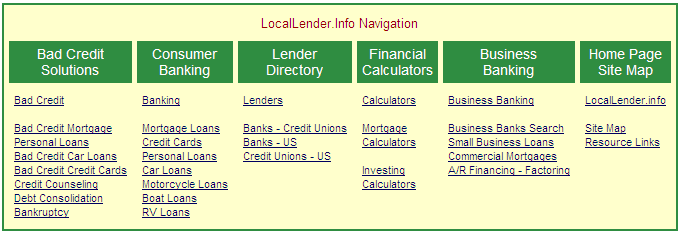If you want to refinance but have bad credit you may want to consider a bad credit refinance.
What makes a bad credit refinance different from a regular refinance loan?
A bad credit refinance will typically have a much higher interest rate (2-6% depending on the borrower's credit) than a loan for someone with excellent credit.
People typically do a bad credit refinance for one of the following reasons:
- Bad credit refinance to consolidate bills
Someone who has high balances on several high interest rate credit cards, car loans or other forms of installment debt.
A bad credit refinance loan with an interest rate of 12% is still better than paying 21% on multiple credit cards.
Since the loan for a bad credit refinance is spread out over 30 years, the monthly payment for the loan (even at the higher interest rate)
would still be lower than the total of all of the individual monthly debt payments.
- Bad credit refinance to get a lower mortgage rate
A person may have decided 2 years ago to get a mortgage after filing a recent bankruptcy. The interest rate on this loan is likely to have been extremely high.
After making some improvements to his/her credit, the borrower may try to get a new bad credit refinance in an effort to get a lower interest rate than they are paying on the current loan.
If a person was paying 13% interest, a 10% interest rate could help lower the monthly payment and cut interest costs dramatically.
Lender fees for a bad credit refinance will also be higher. Keep in mind however, if you consistently make your payments on time for two (2) consecutive years for a bad credit refinance and take
continued steps to improve your credit, you should be able to refinance into a much lower interest rate.
LowerMyBills offers a service that can help you refinance your current mortgage.
Click Lower your mortgage payments and save $1,000's. Bad Credit OK! to learn more.
